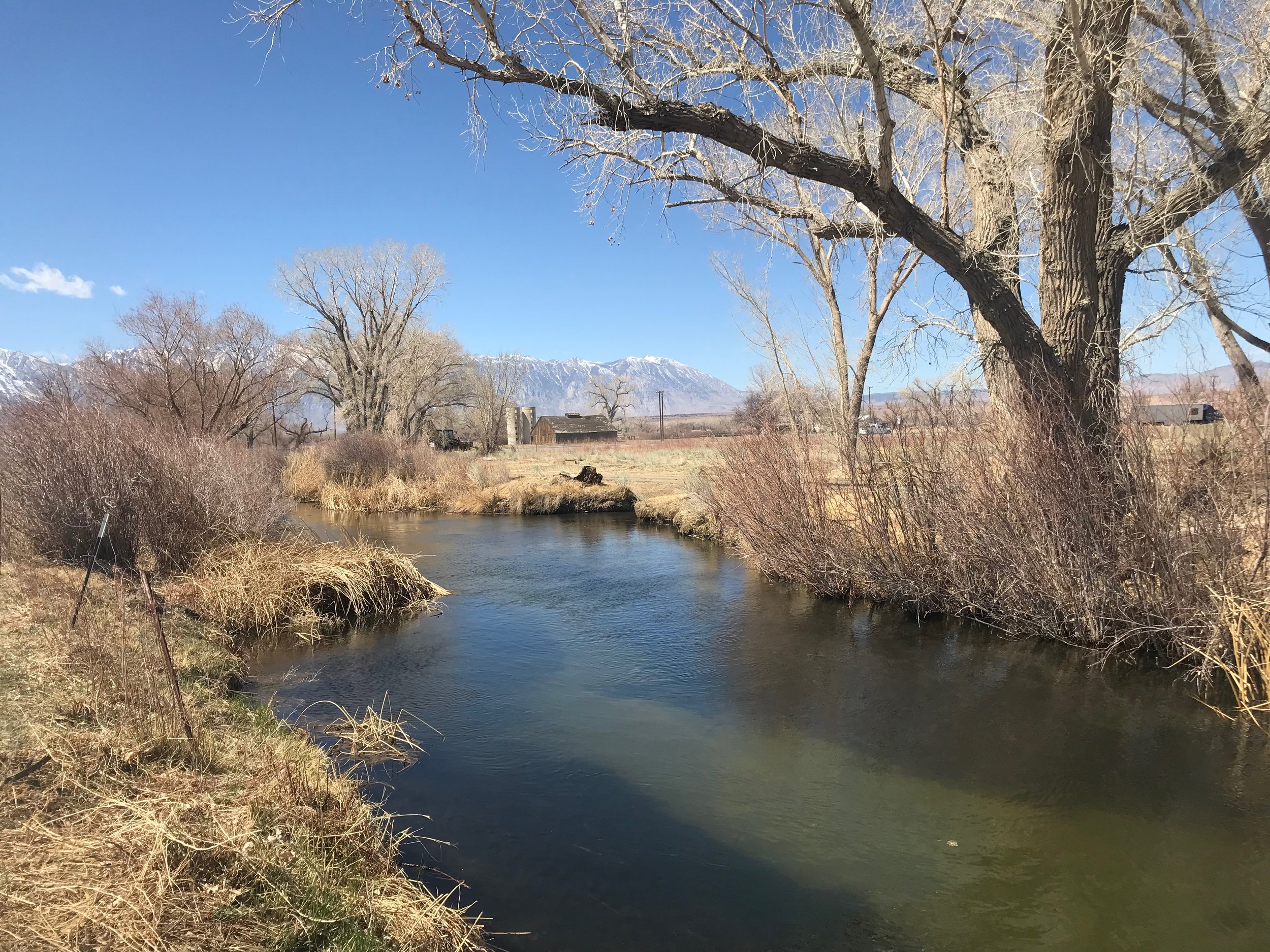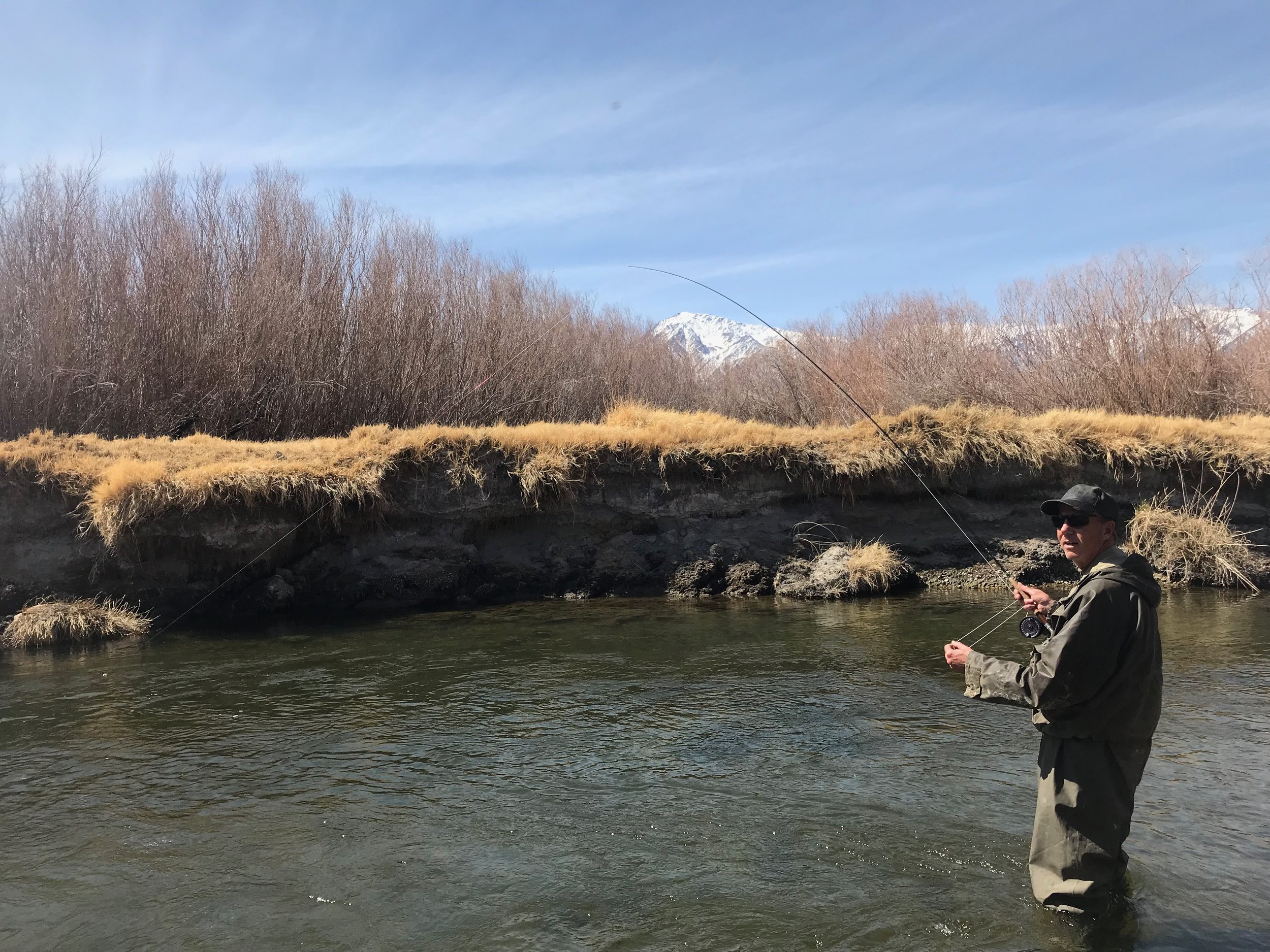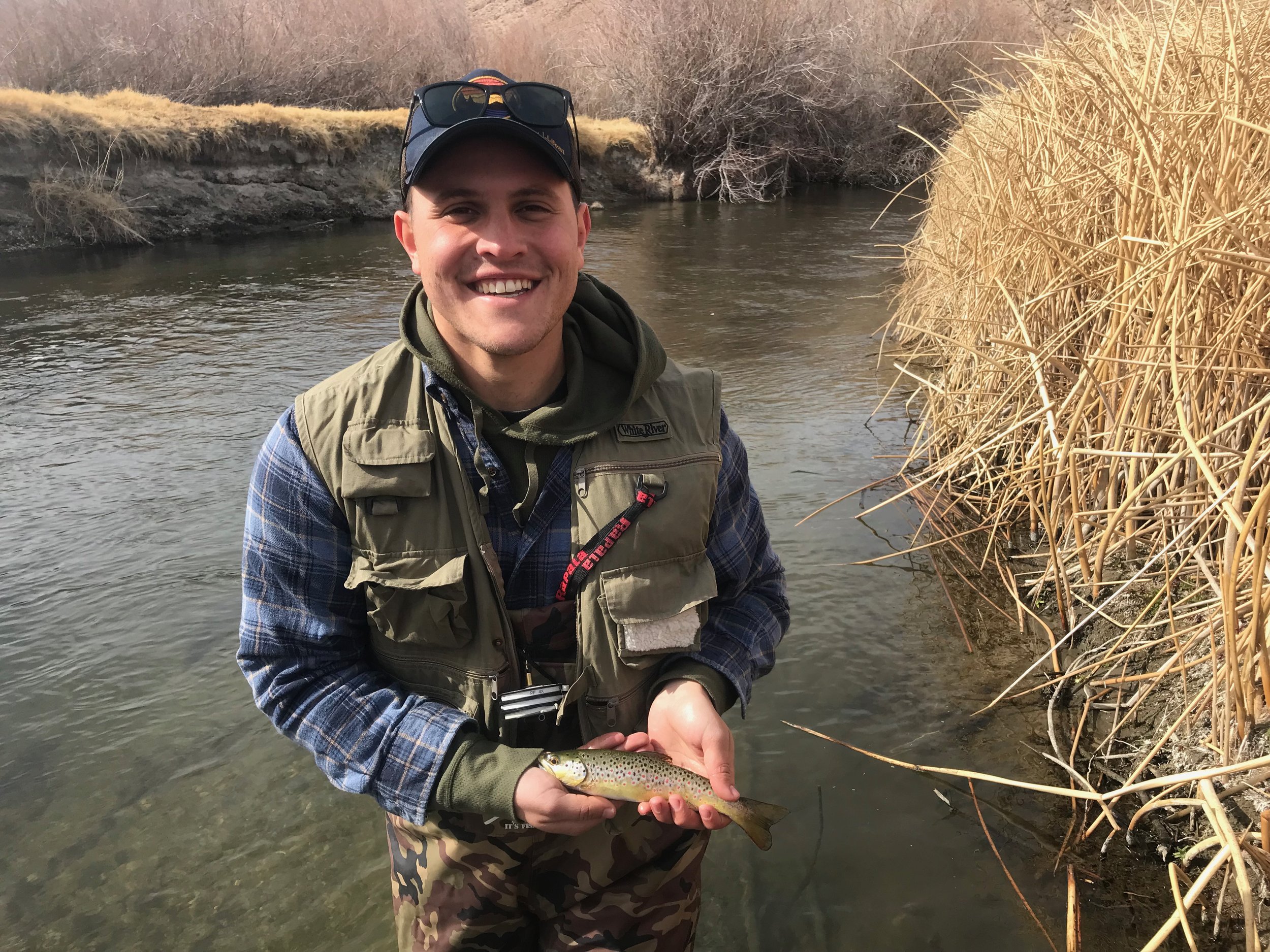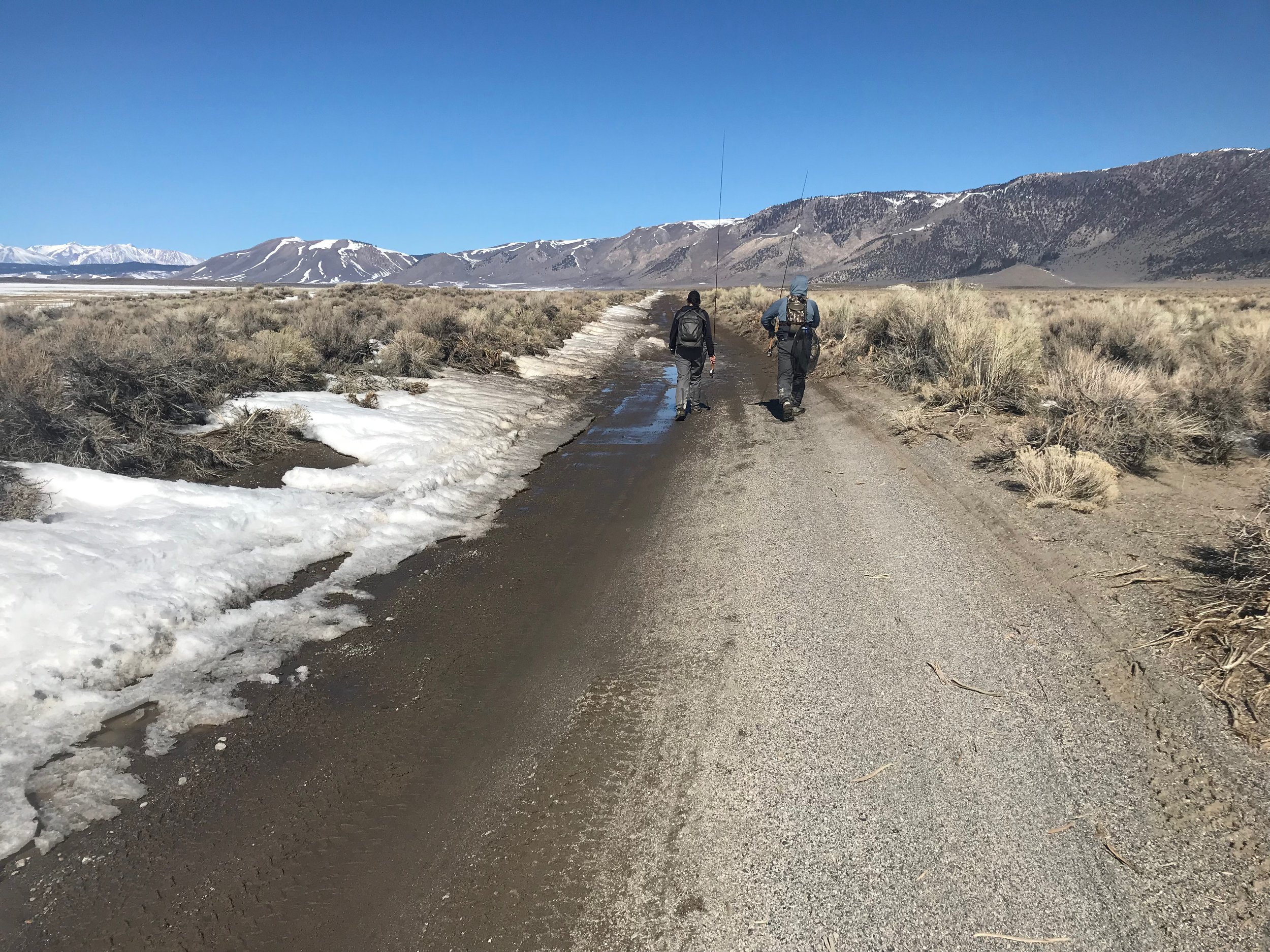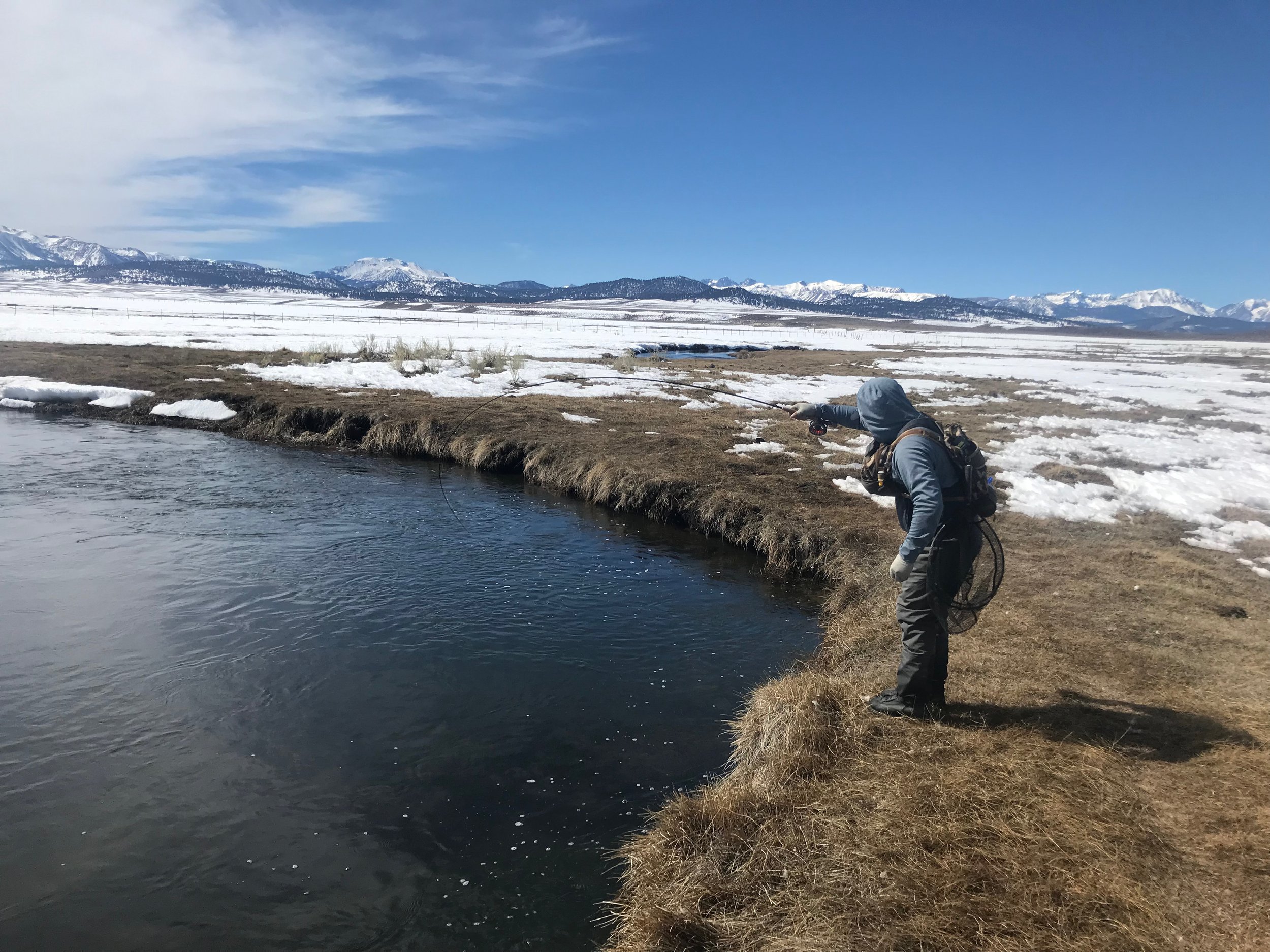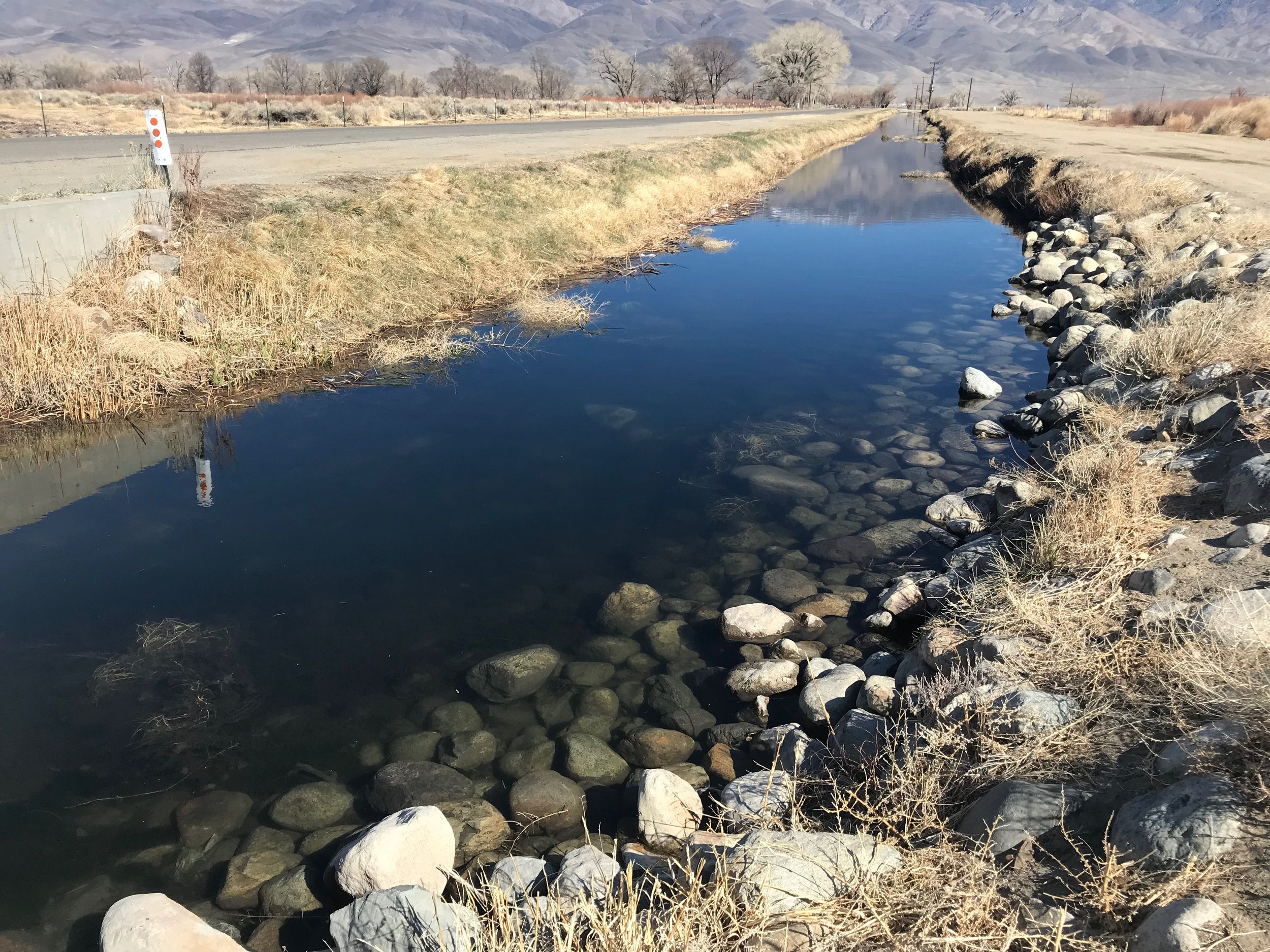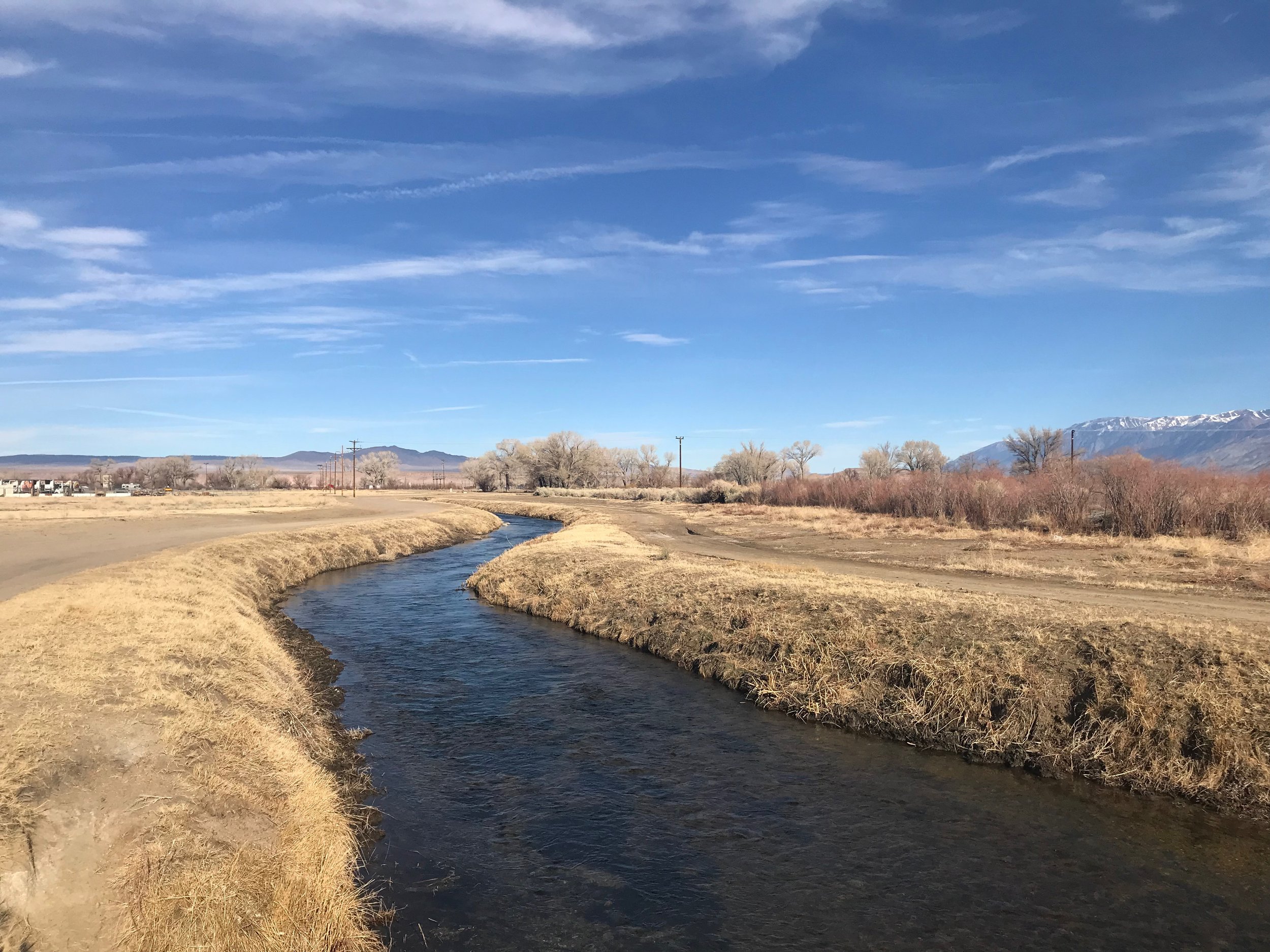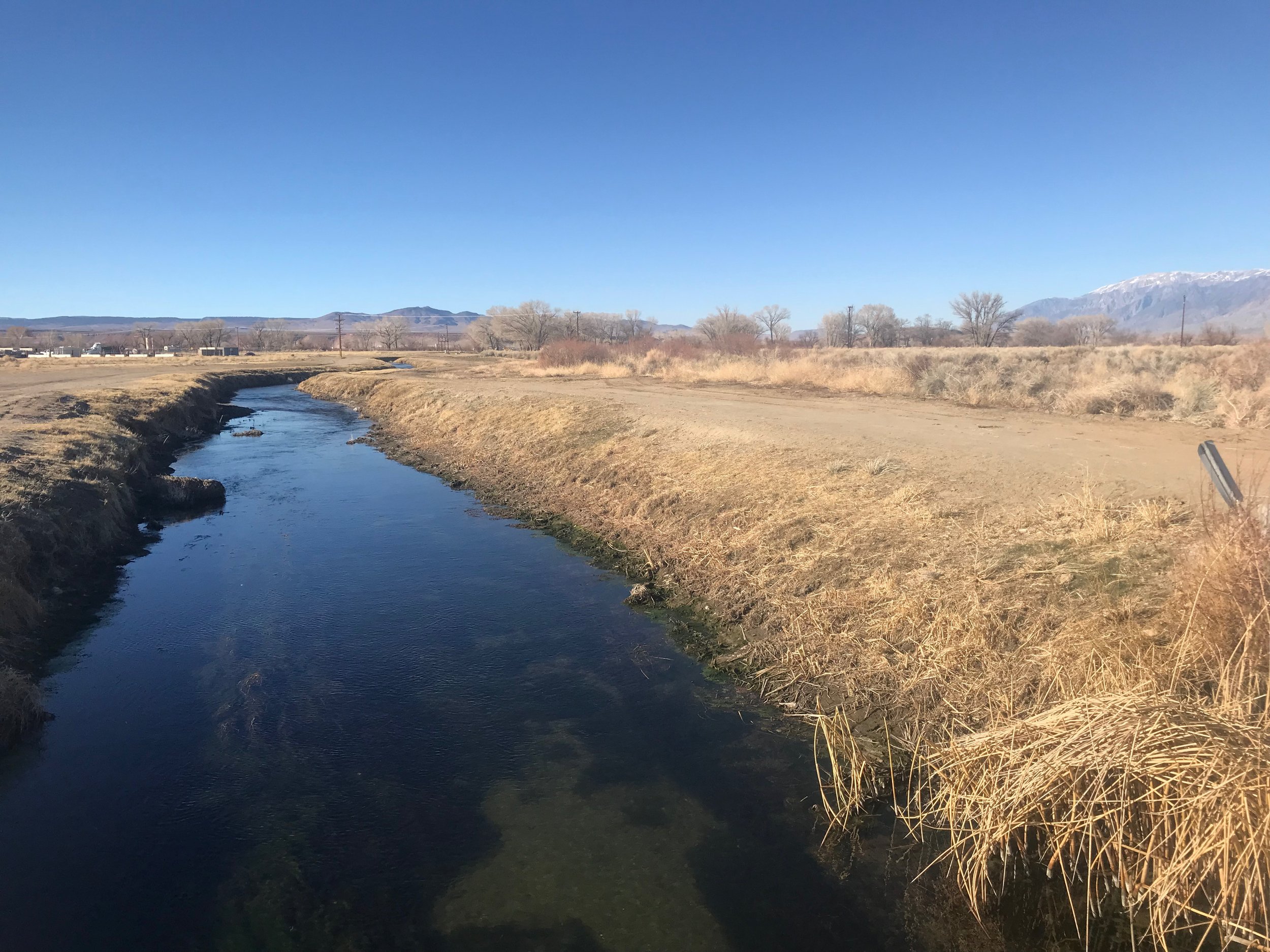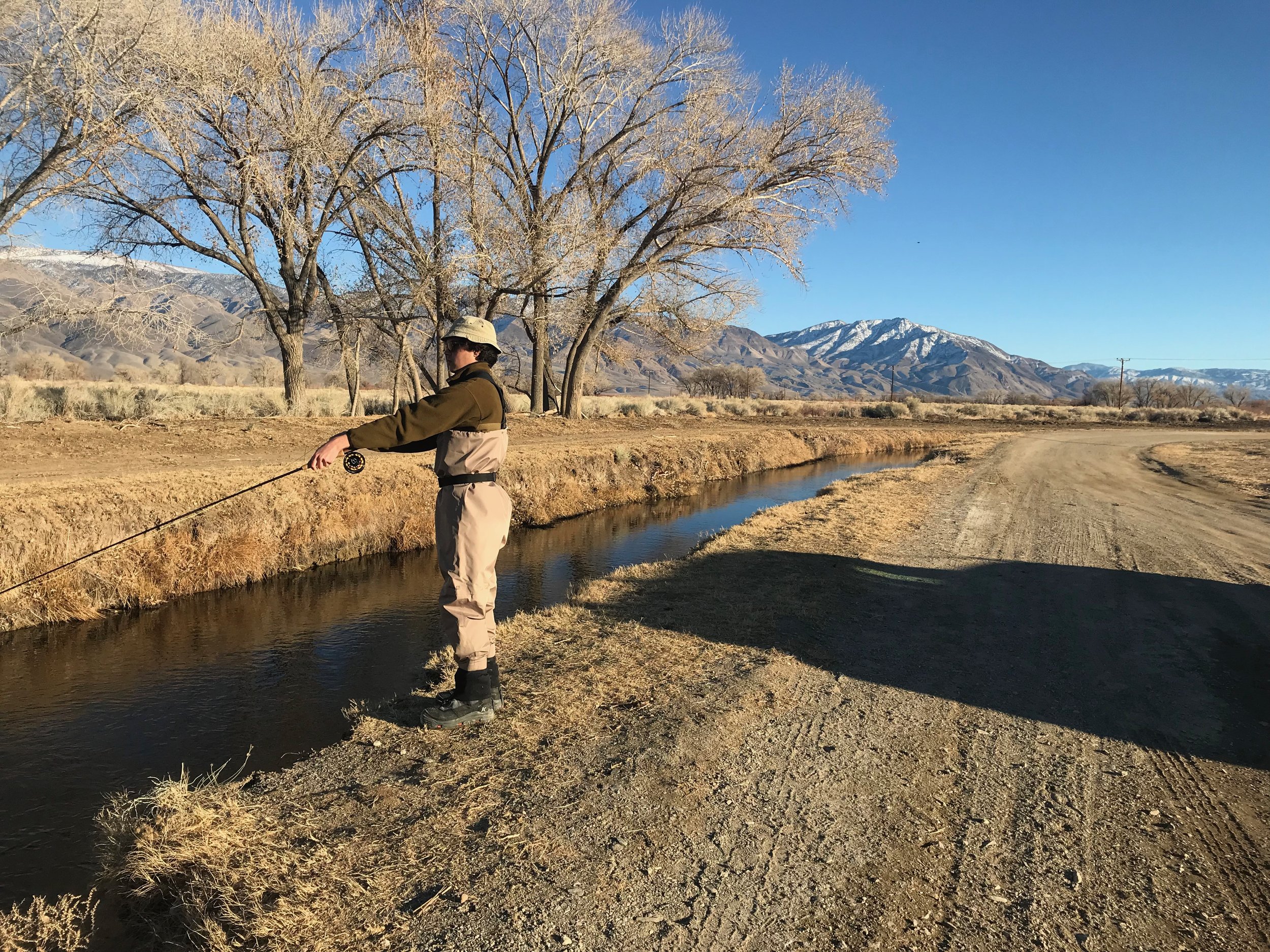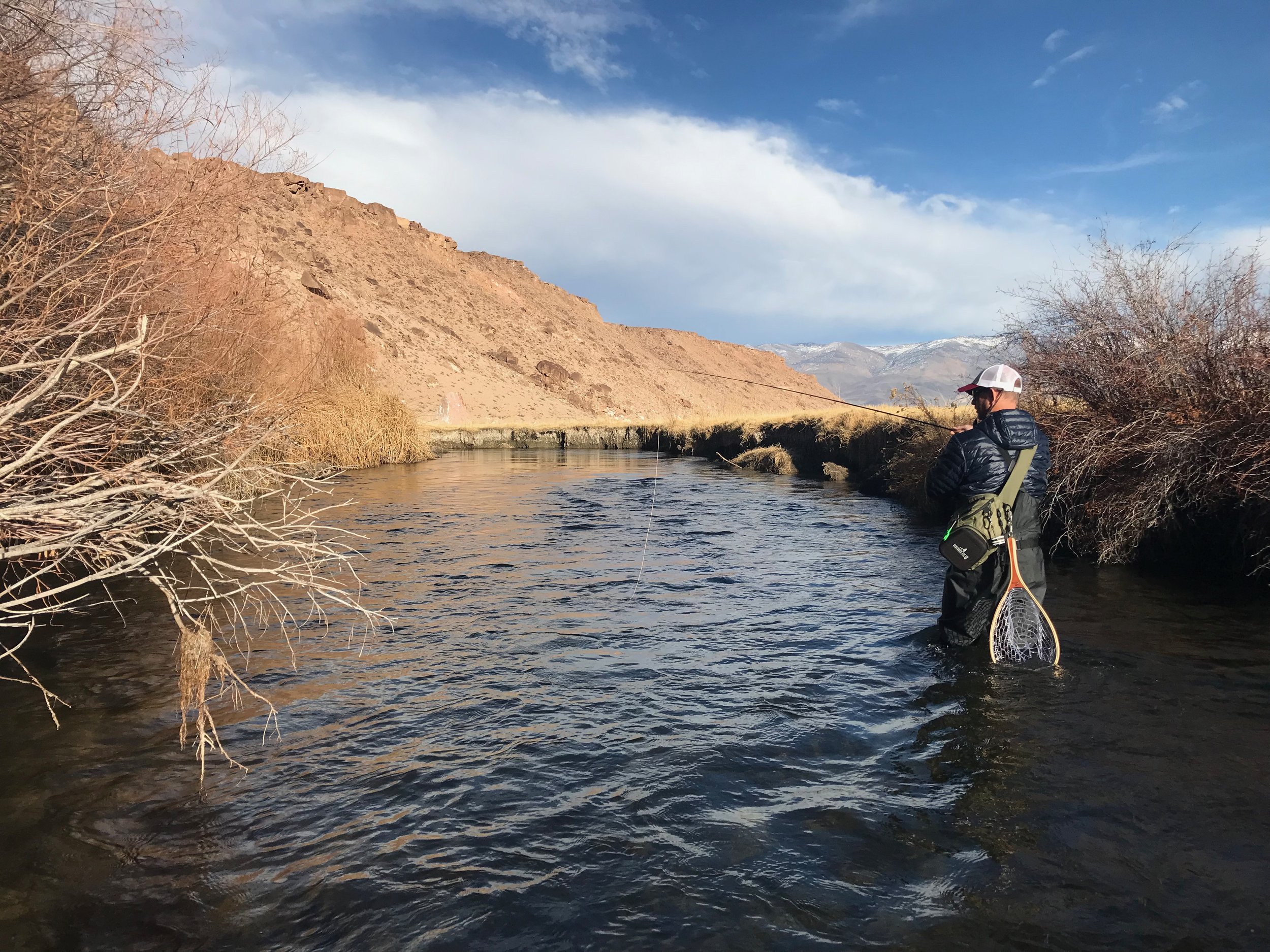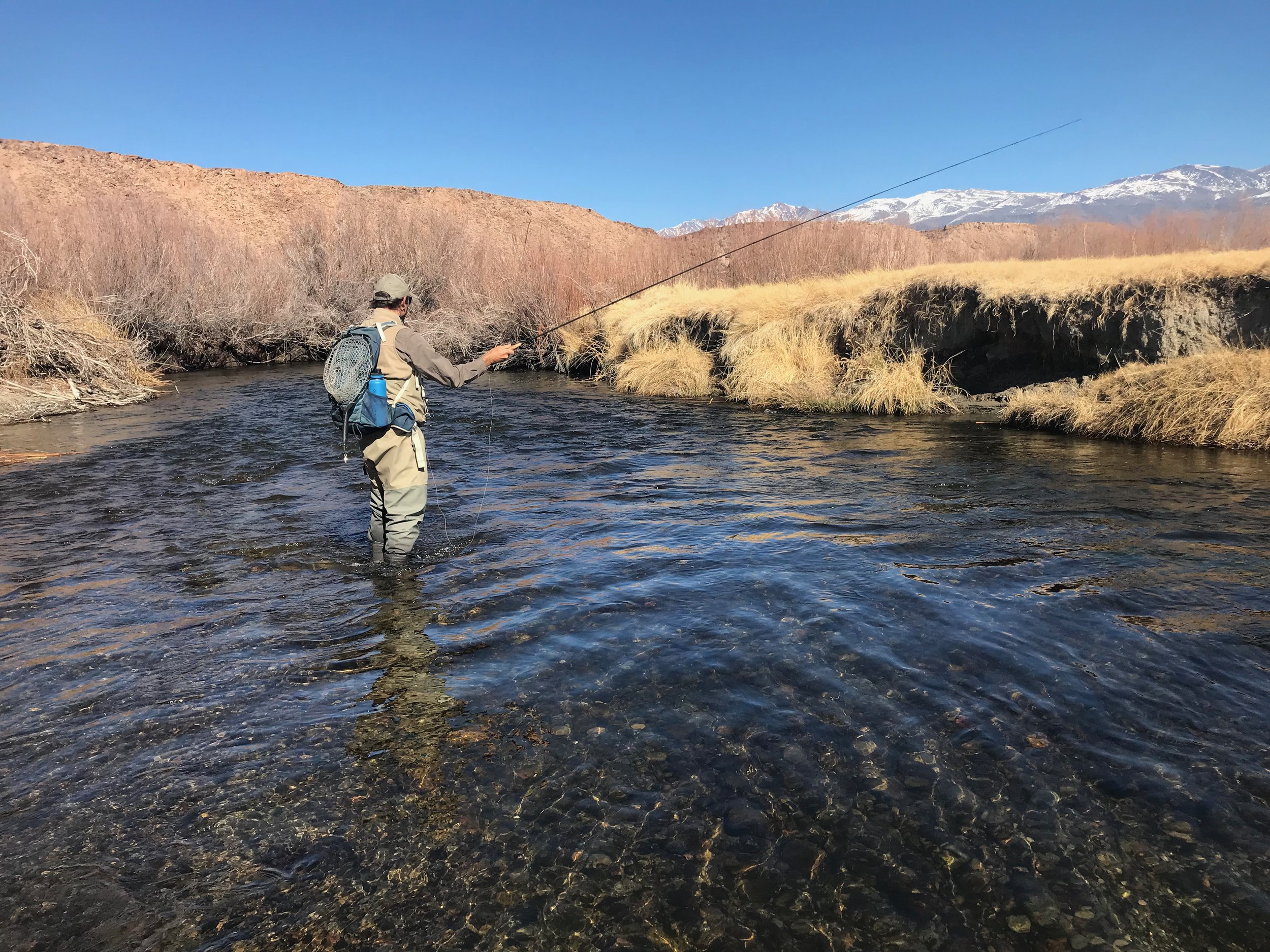Spring has sprung as a few days of 80 degree weather hits the Owens Valley. This warm weather is melting snow quick in a number of areas. Upper elevations to the 7,000 foot range are pretty much snow free with vehicle access in most spots. There are still some snow drifts and wet muddy roads to avoid. Drive with caution in wet and snowy areas. This warm weather has the mayflies, midges, and caddis hatching. Looks like we have a third year of below normal water for the Eastern Sierra. Plan your trips accordingly. August through October is now fire season and fly fishers should be prepared for smoky days in this time frame. Streams will be at their lowest levels in the fall. Plan your Eastern Sierra fly fishing trips accordingly.
Julia Swanson from CDFW explaining the different fins of a trout to Bishop Elementary first grade kids during the trout in the class room release at Bishop Creek. Another year comes to an end for trout in the class room.
Lower Owens River:
Wild Trout Section:
Water flows are at 85 CFS which allows wading fly fishers access to the entire river. Midges, mayflies and caddis are hatching during the day. I start the day off with midge nymphs and or midge pupae patterns. An hour or two before the blue wing olive may fly hatch the trout start keying in on the blue wing olive nymphs. After the blue wing olive may fly hatch the caddis hatch in the lower third of the wild trout section, from gate 13 to Five Bridges. I’m fishing size 20 and 22 tiger and zebra midges in nymphs and pupae patterns. For the blue wing olive nymph I’m fishing with a size 16 olive quilldigon and a size 18 bead head flash back pheasant tail nymph. When the hatch is in full swing I switch to a size 18 blue wing olive parachute or size 18 olive sparkle dun. For the caddis I’m fishing with a size 18 gray elk hair caddis or gray X-caddis.
Brown trout are the dominate trout species in the lower Owens River wild trout section.
Hot Creek:
Interpretive Site:
Angles can access the creek with their vehicles. The warm weather has the blue wing olive may flies hatching. The trout are keying in on the hatching adults. A size 20 blue wing olive parachute or a size 20 olive sparkle dun is producing trout on the surface for dry fly fishers. There are still a lot of midges around and they are worth fishing as nymphs and adults. A size 20 to 22 tiger midge or zebra midge in nymph or pupae style is producing. For the midge adult I fish size 20 Griffiths gnat or a biot midge emerger.
Hot Creek:
Canyon Section:
The snow has melted allowing fly fishers to access the canyon section with their vehicles. The stepper gradient in the canyon section lends its self to nymphing. Nymphing under a dry fly like a size 16 Adams Parachute with a midge or blue wing olive nymph is producing wild trout. For the nymphs I’m using size 20 to 22 tiger midge or zebra midge in nymph or pupae style. To imitate the blue wing olive nymphs I’m fishing with size 18 bead head flash back pheasant tail nymphs or size 16 olive quilldigons. In the right spots of the canyon the hatch comes off with enough intensity to get the trout feeding on the surface. I’m using blue wing olive parachutes and olive sparkle duns in size 20.
Alex Ceja from Napa, CA landing a trophy rainbow trout from the upper Owens River while Euro nymphing.
Upper Owens River:
Above Benton Crossing Bridge:
Fly fishers are driving in on the main road to the upper Owens River. I would drive with caution on the spur roads out to the river. Some of these roads are still sloppy and getting stuck is a real possibility. There are still decent numbers of trophy trout in the system. These fish are resting and feeding in the deeper channels, holes and cutbanks. Successful fly fishers are covering lots of ground to find the spots that are holding trout. I’m Euro nymphing these spots with size 12 stoner nymphs and size 12 green/gold Prince nymphs on competition jig hooks. The key to success is having the right beads on the flies to get the patterns working down deep on the substrate where the trout are feeding.
Low clear water on Bishop Creek makes it really hard to present a fly to wild brown trout without spooking them.
Bishop Creek Canal:
Behind the Ford Dealer:
Low clear water and spooky trout continues to haunt fly fishers working Bishop Creek Canal. I’m having success working the areas where the water is flowing quickly into deeper holes. With the trout being so spooky I’m primarily fishing with dry flies or a dry and dropper rig that I can cast 30 to 50 feet above me to keep from spooking trout. Size 18 blue wing olive parachutes and size 18 olive sparkle duns are fooling the surface feeding wild brown trout. When I’m nymphing I’m using a size 16 Adams parachute for the dry and size 18 bead head flash back pheasant tail nymp. Best fishing has been in the early afternoons when the wind is not gusting at 40 mph.






